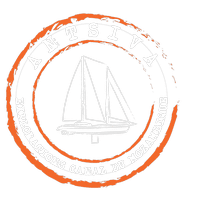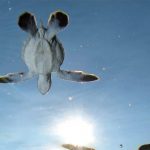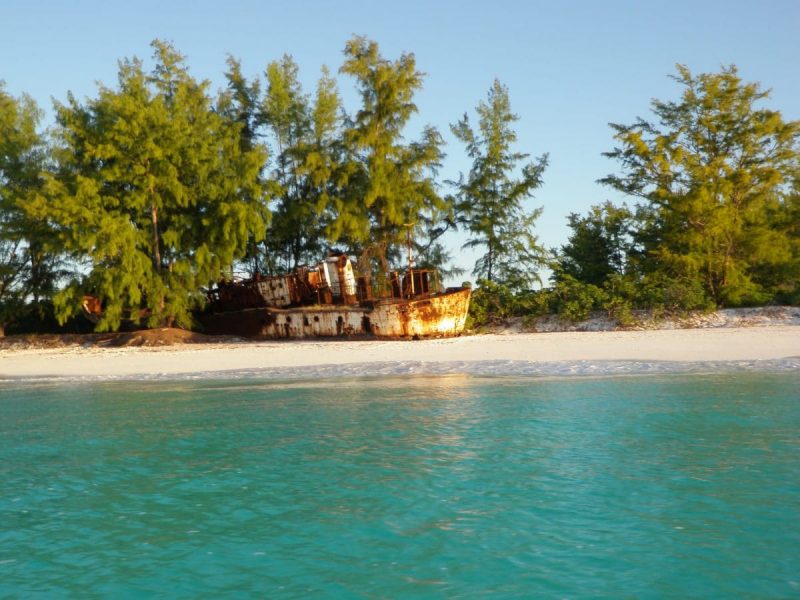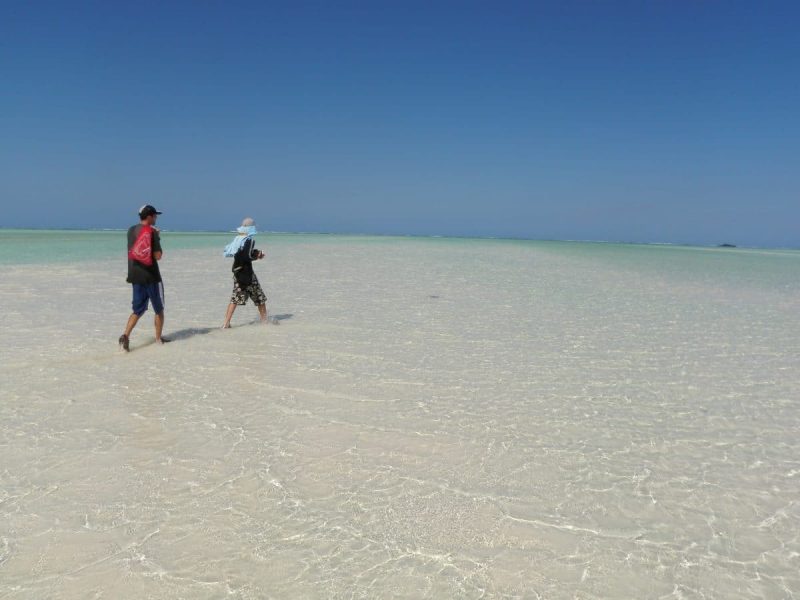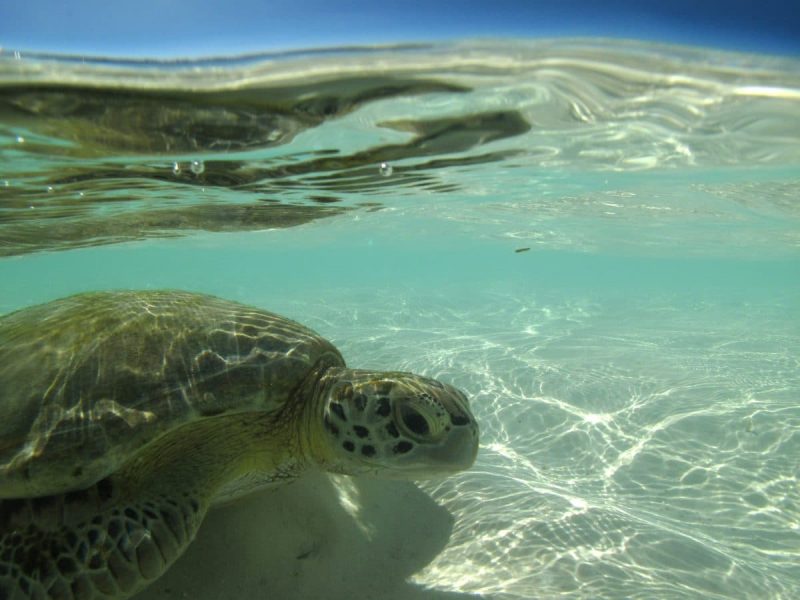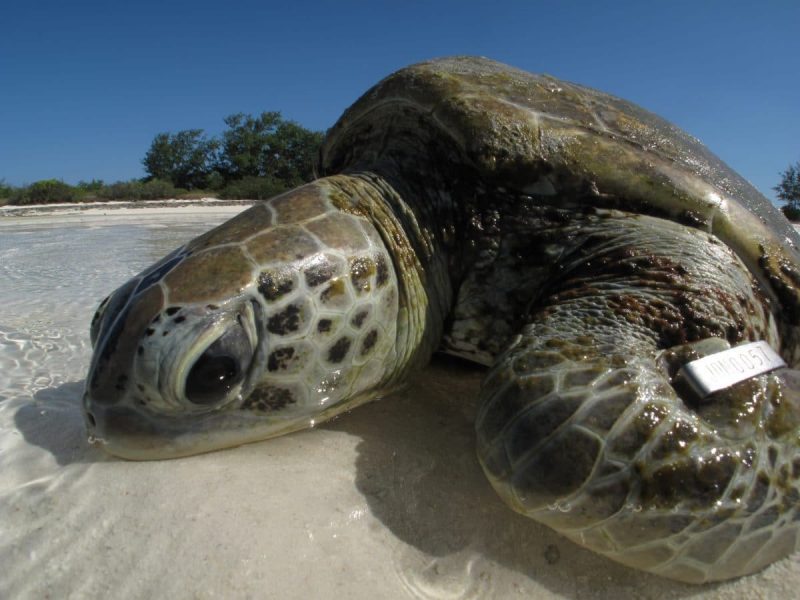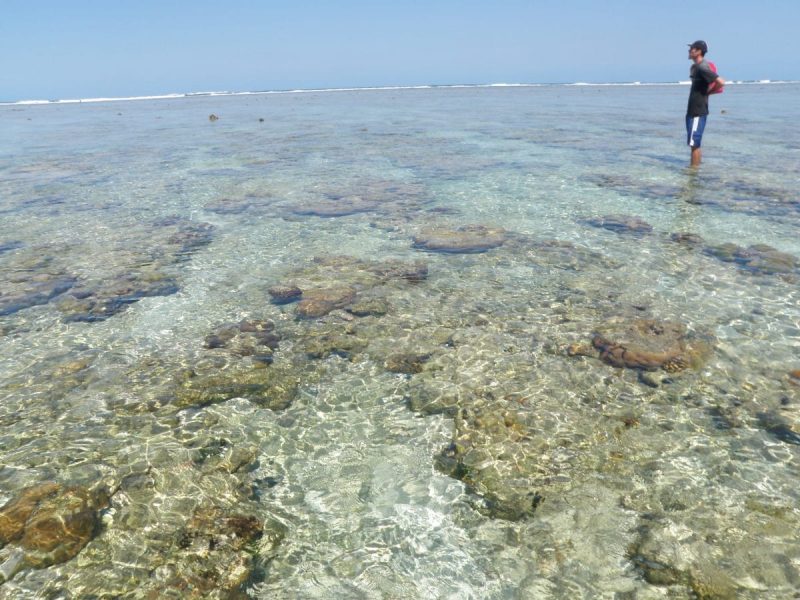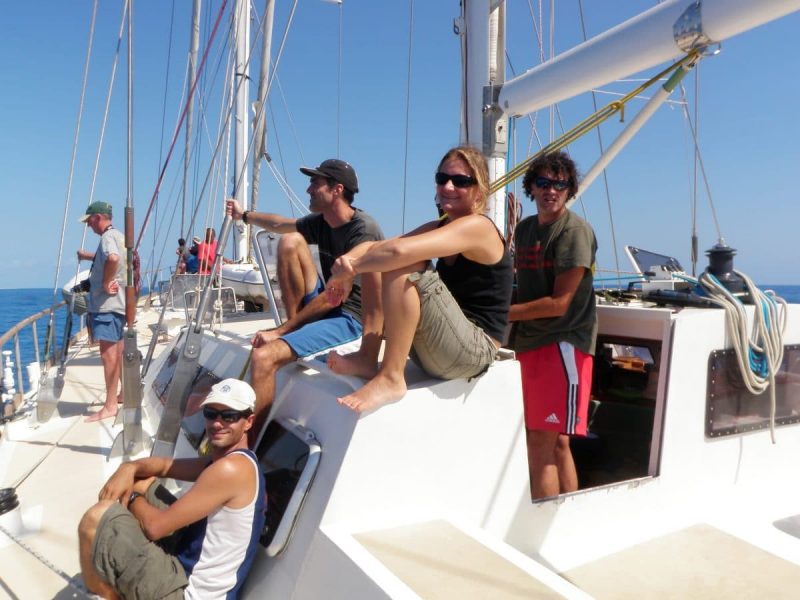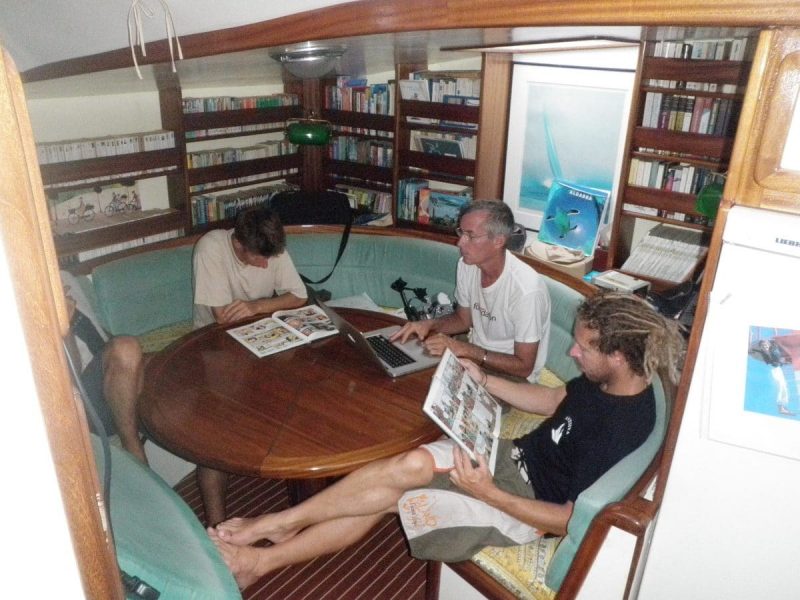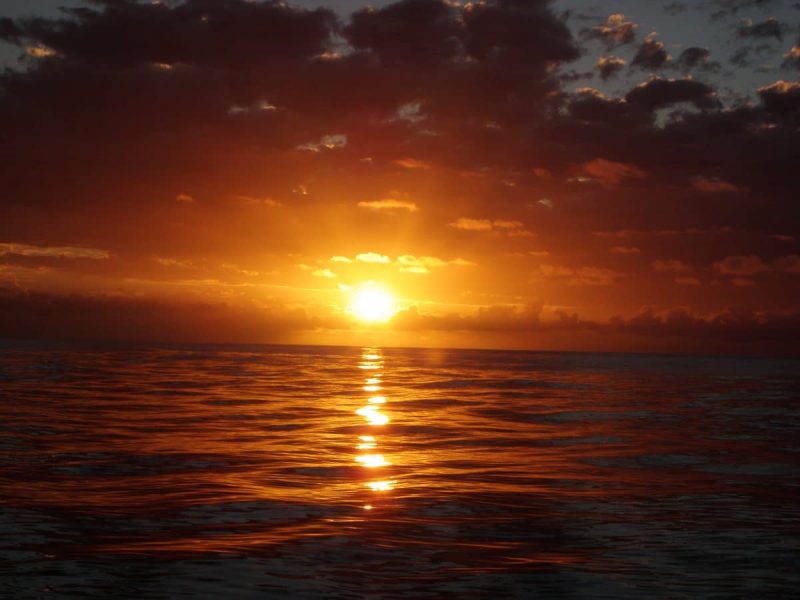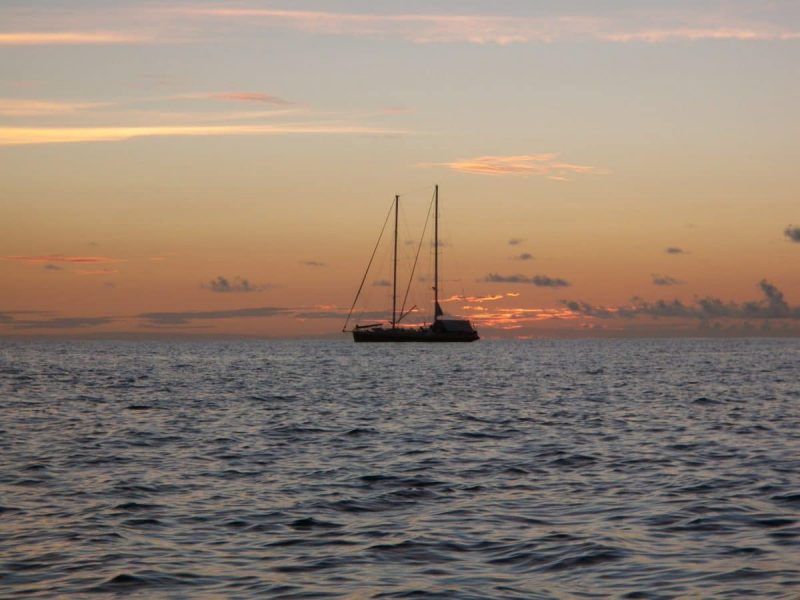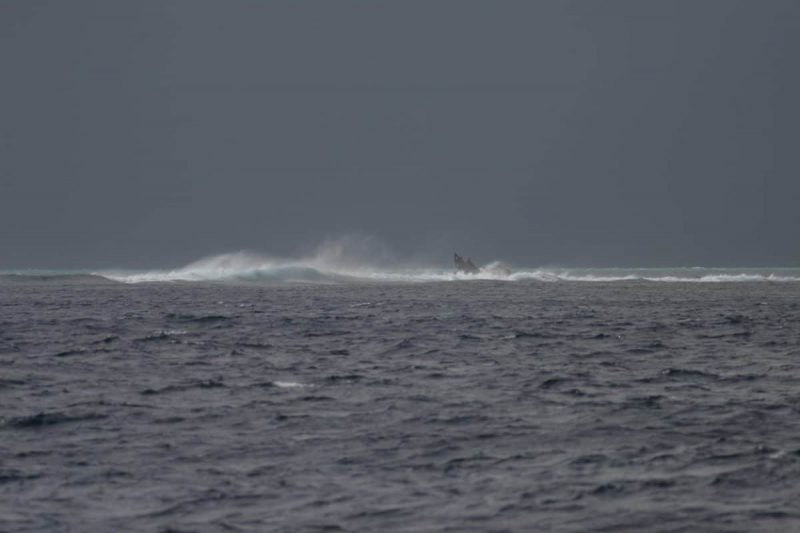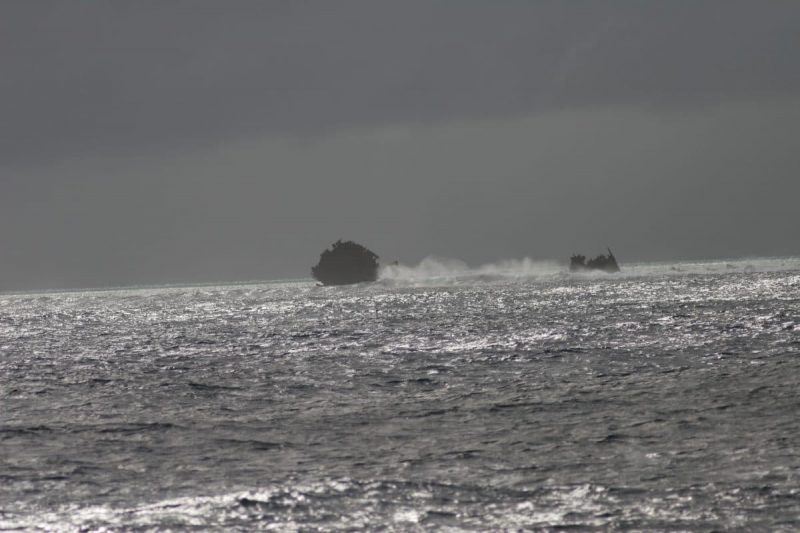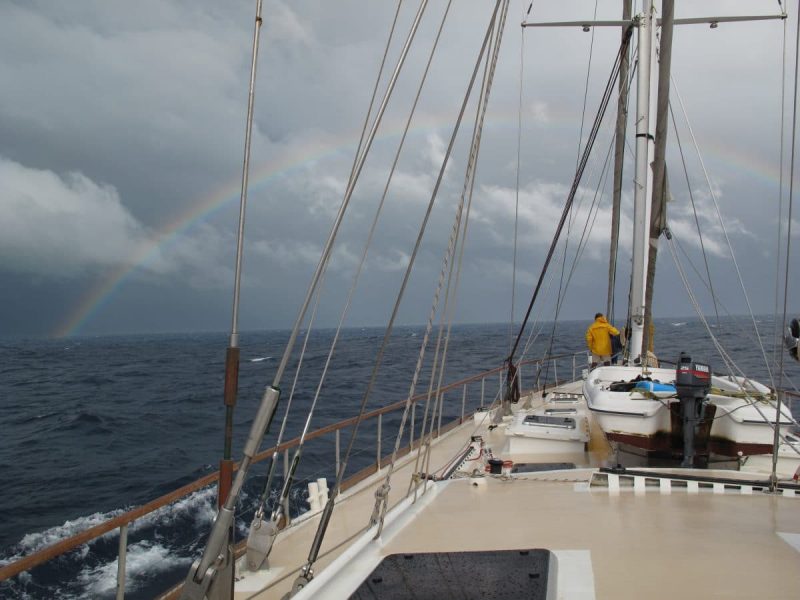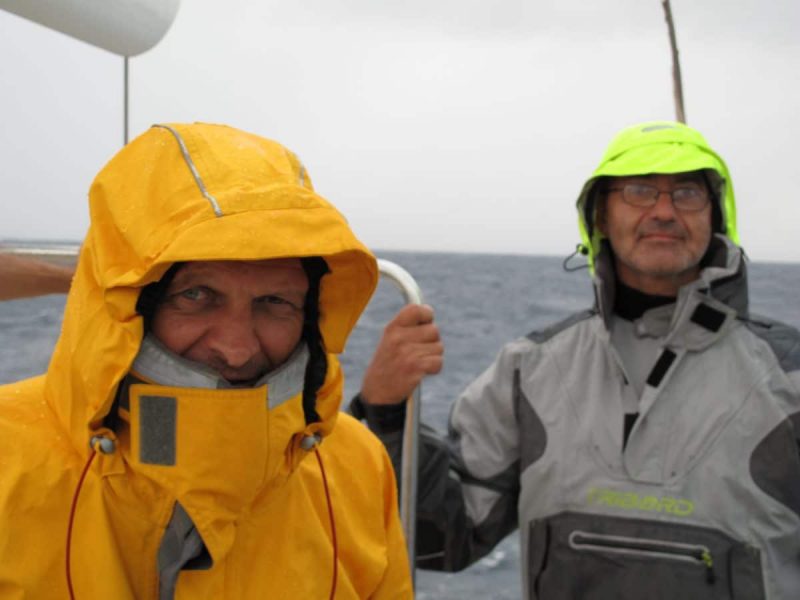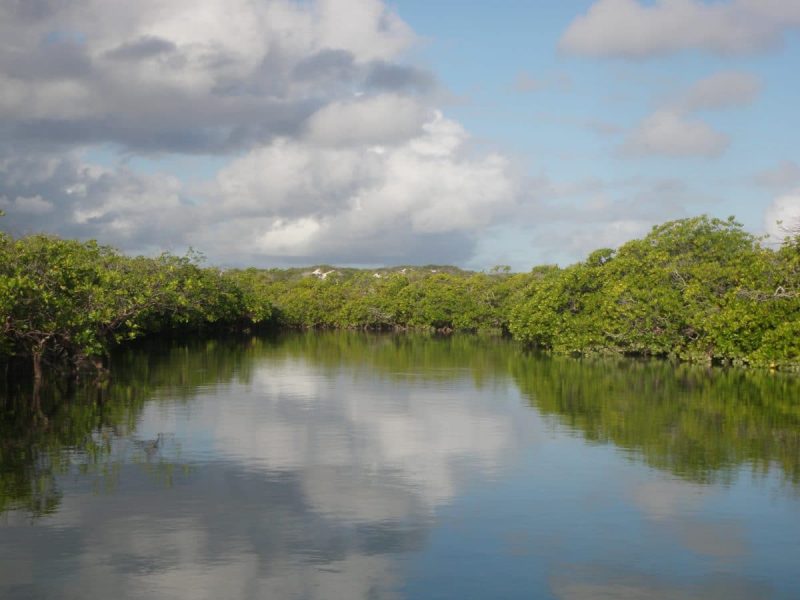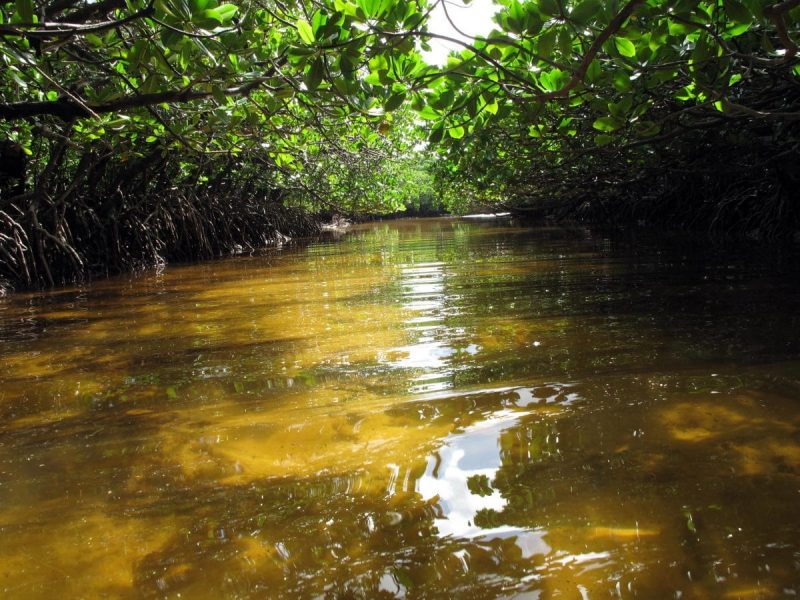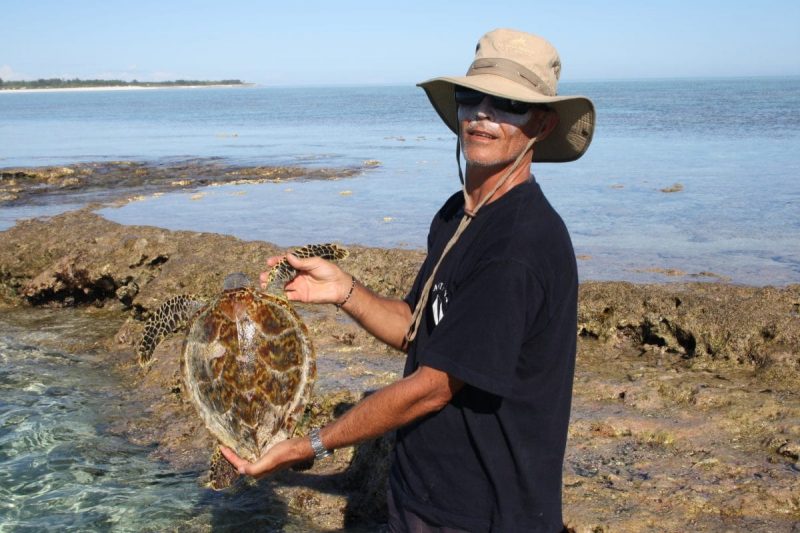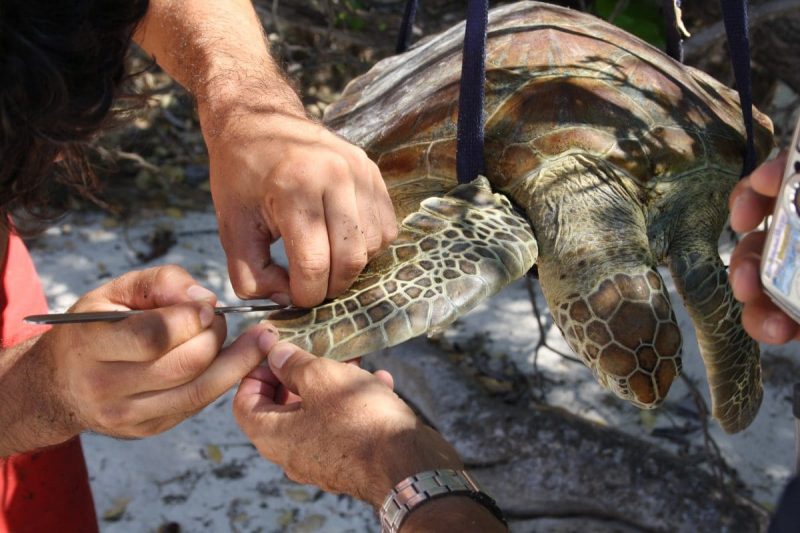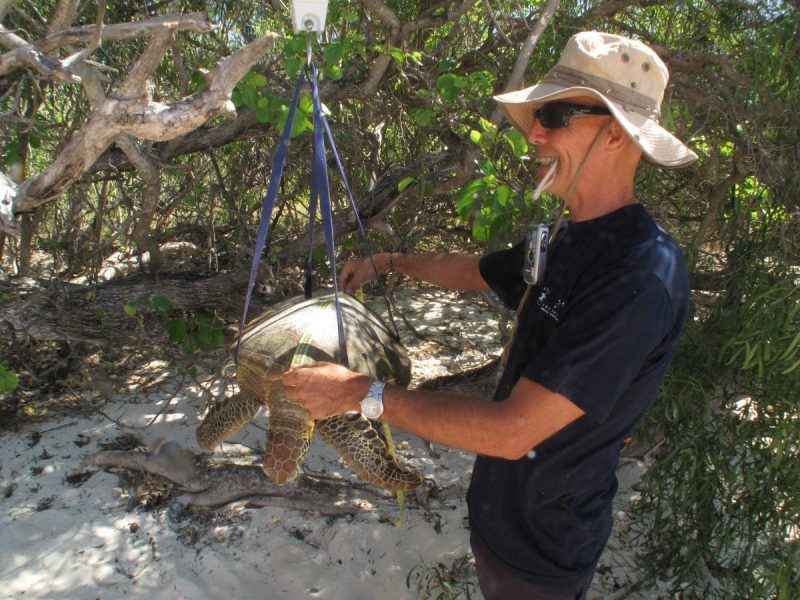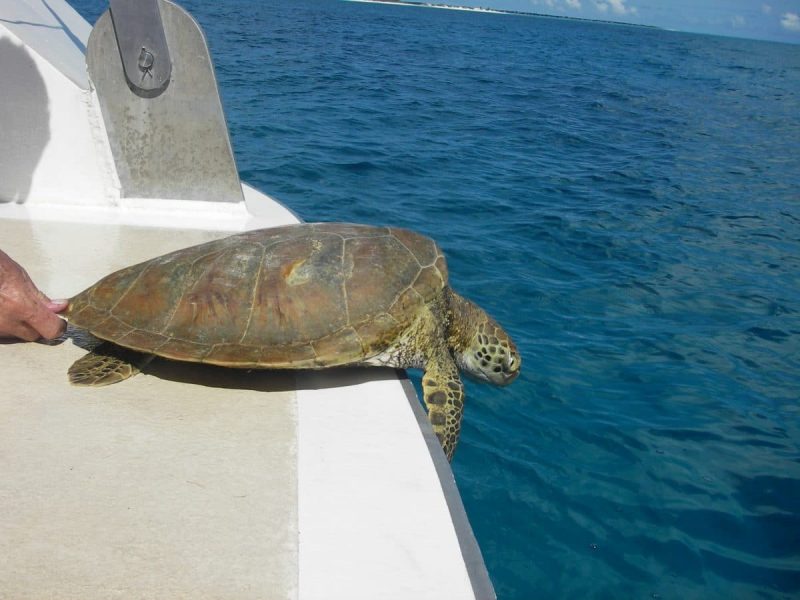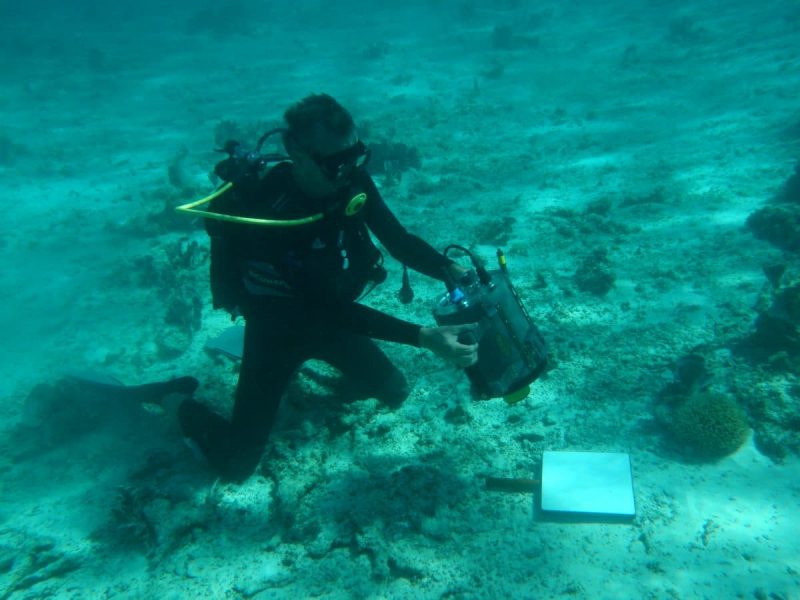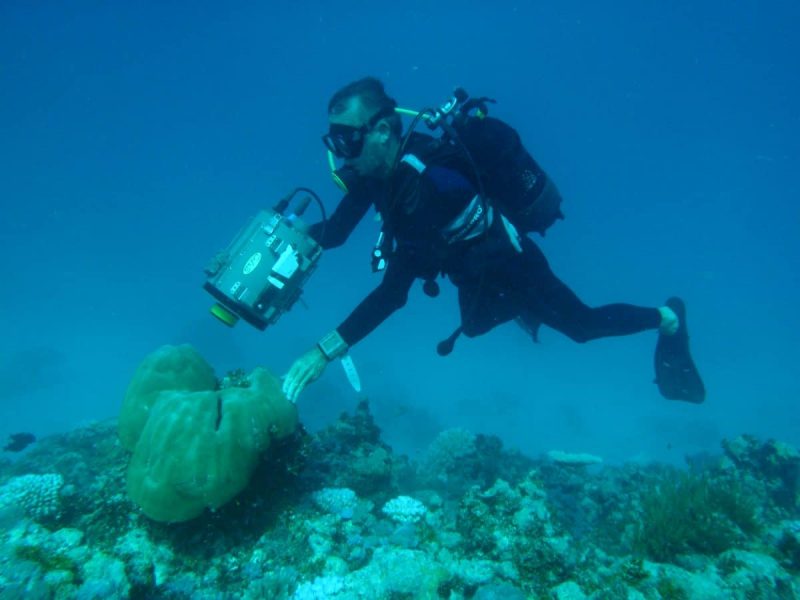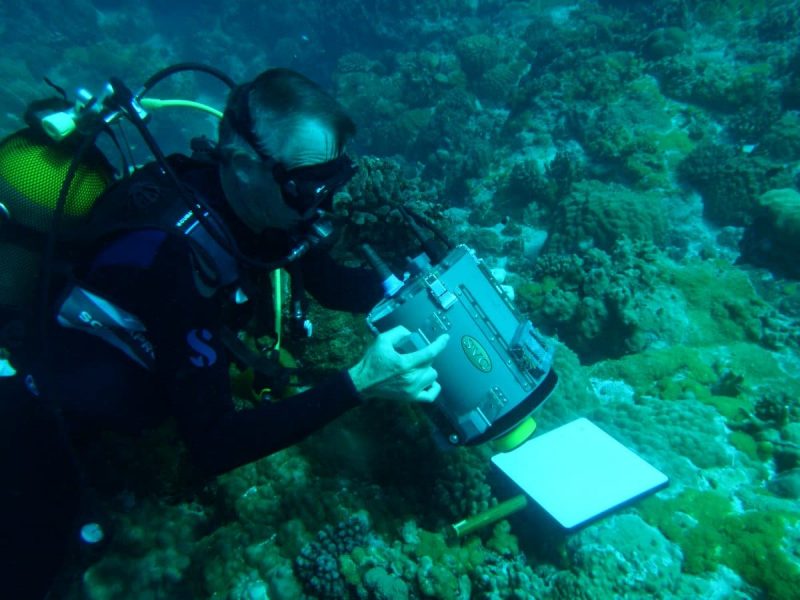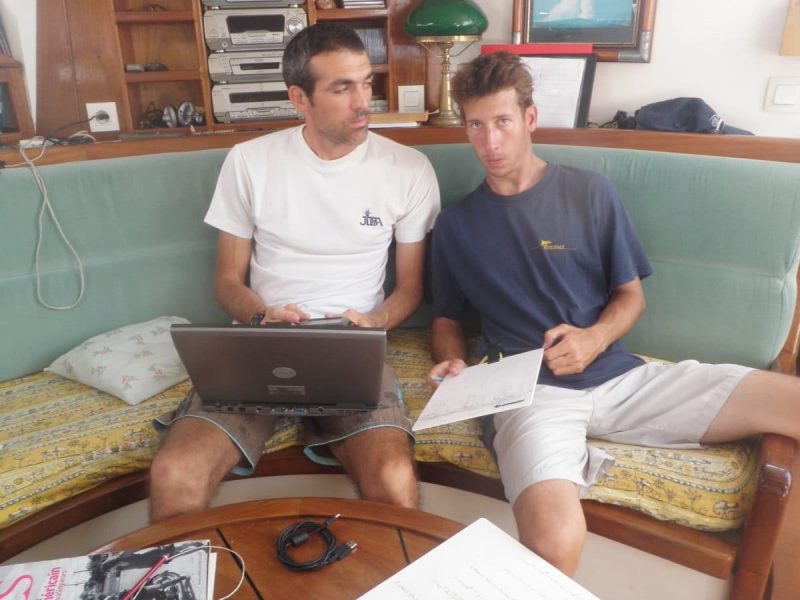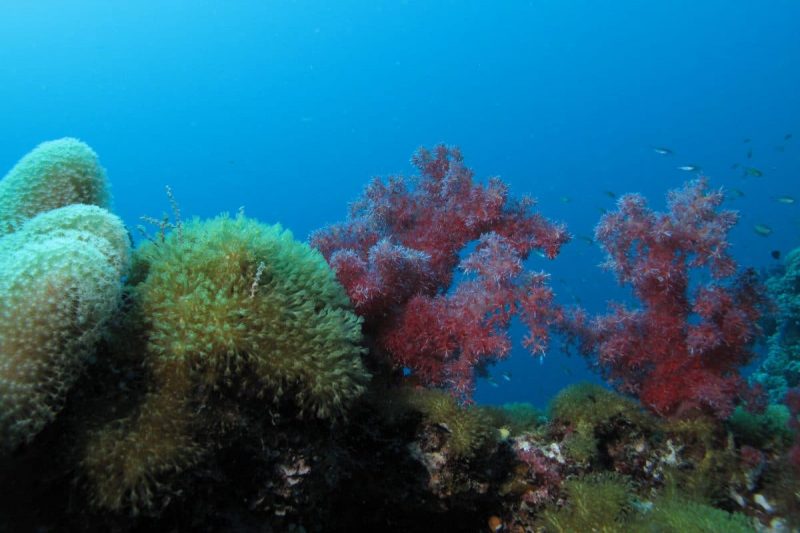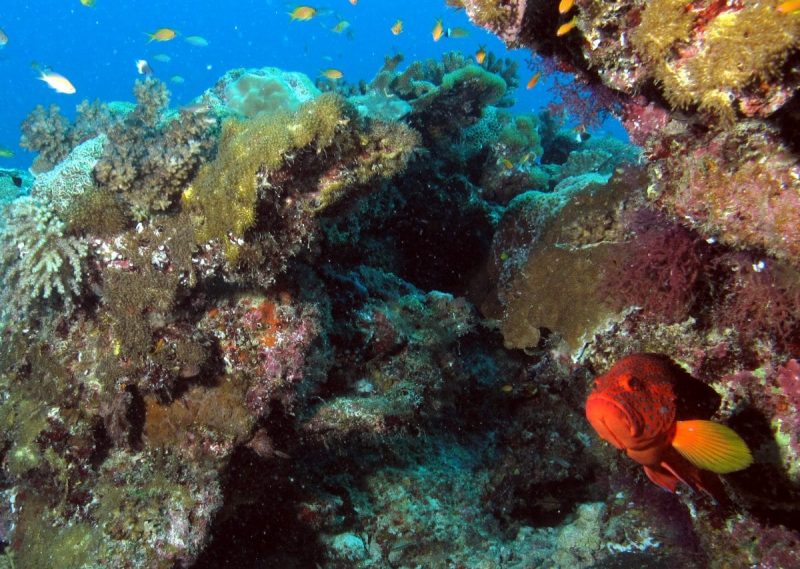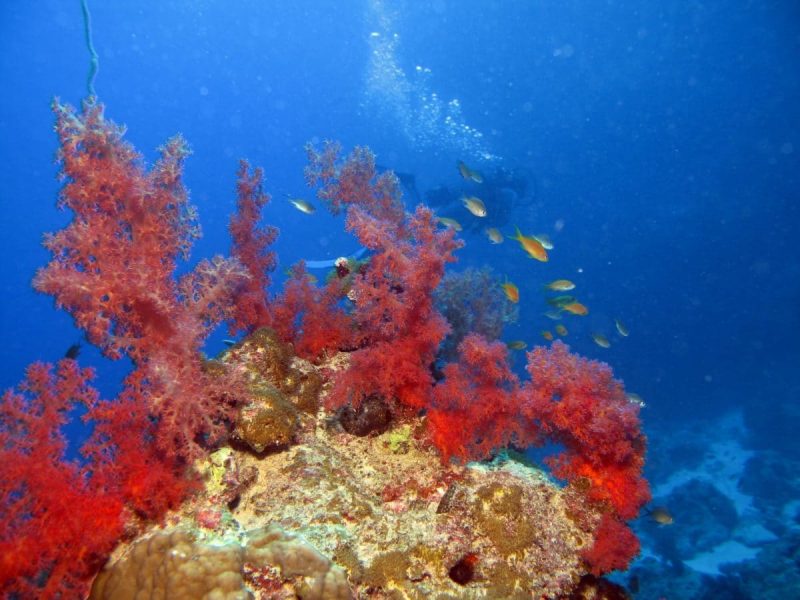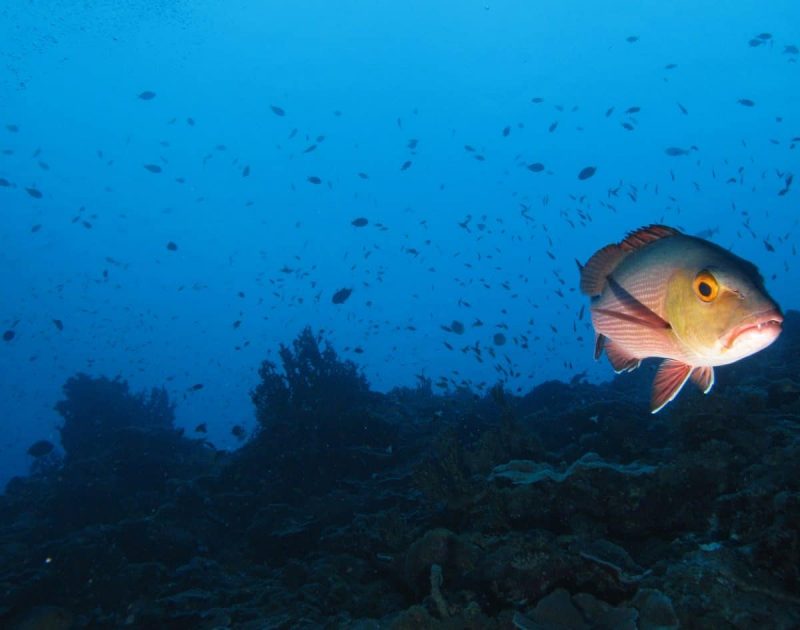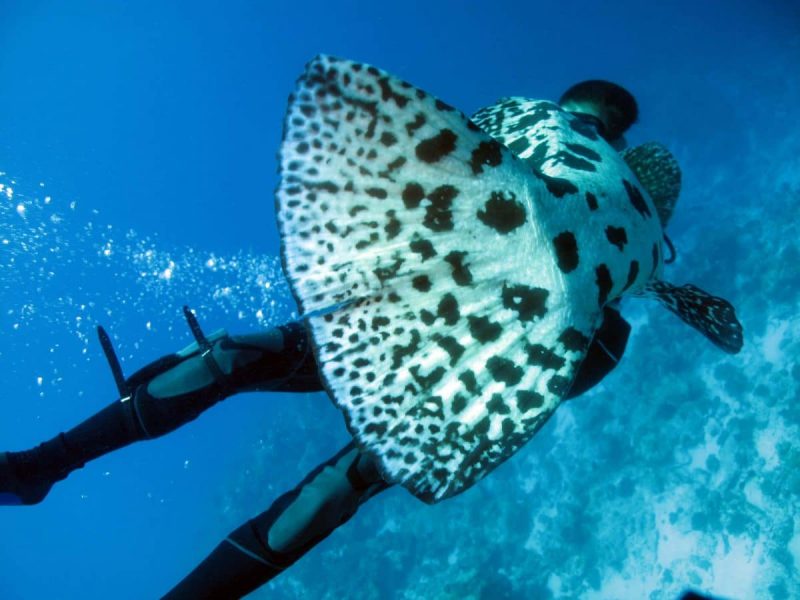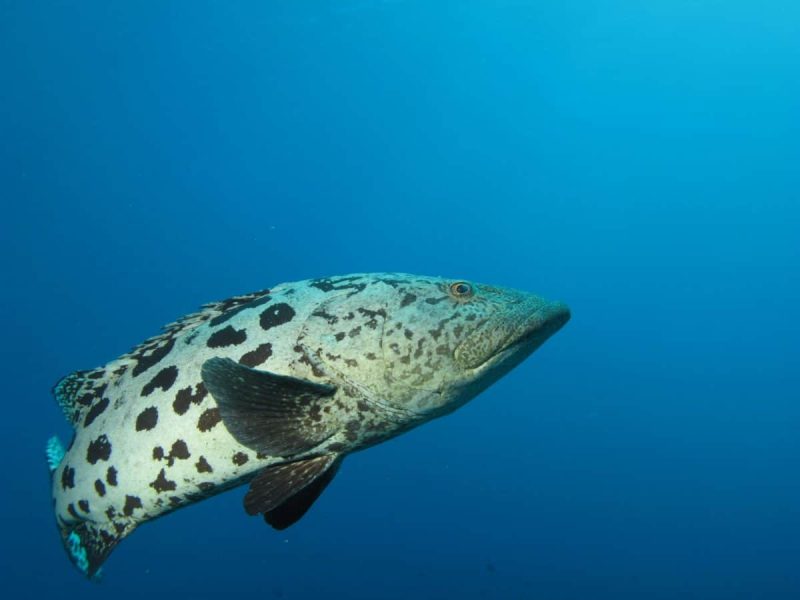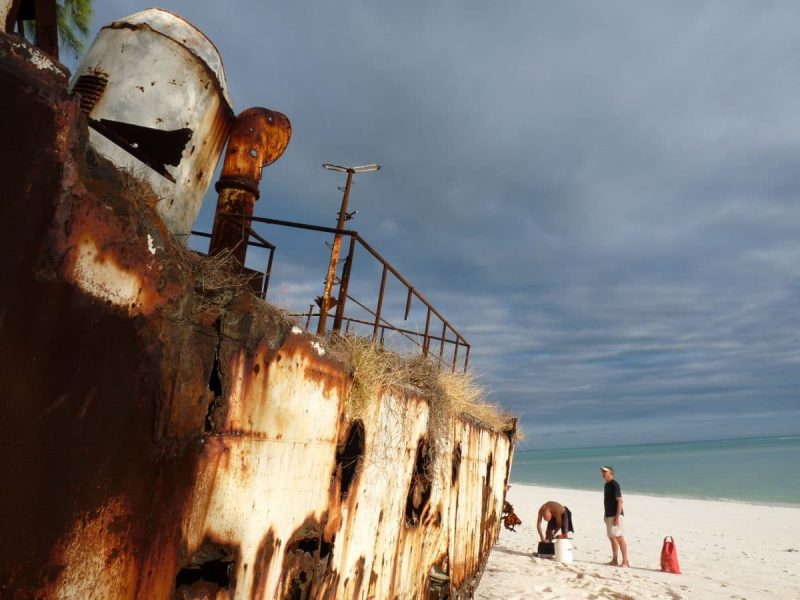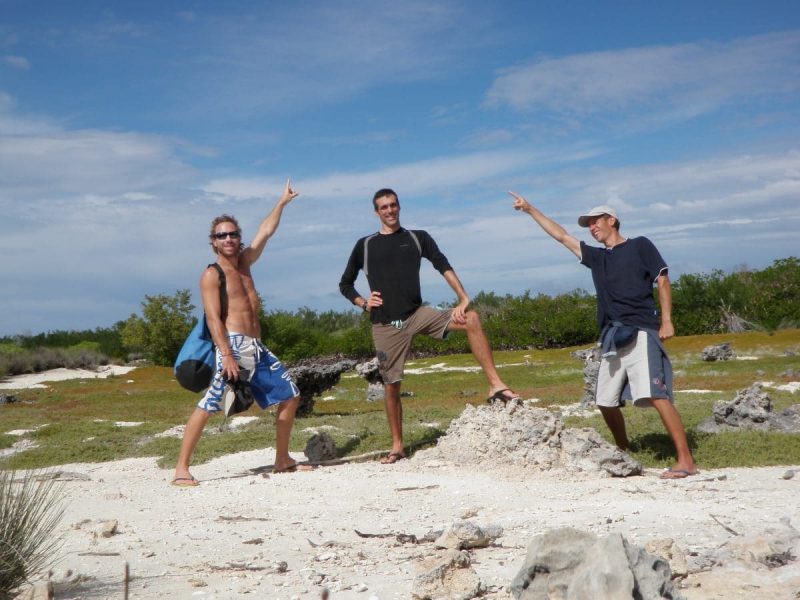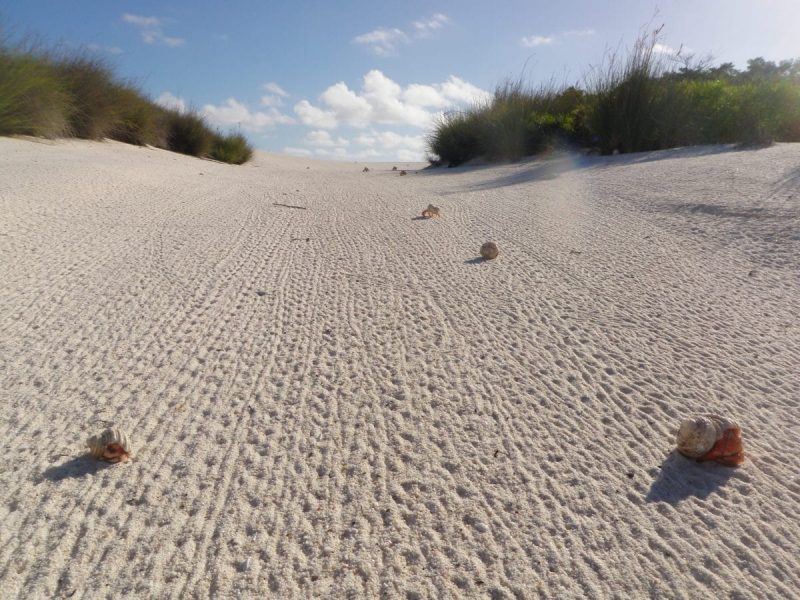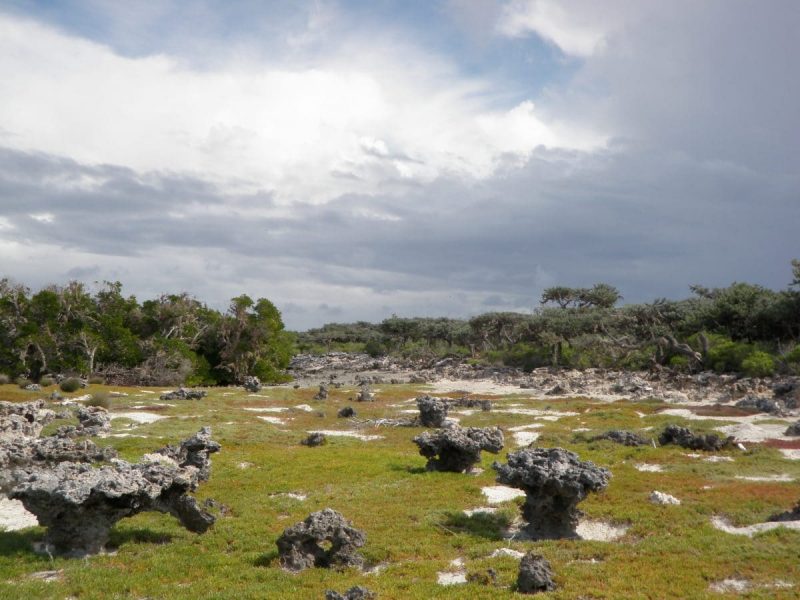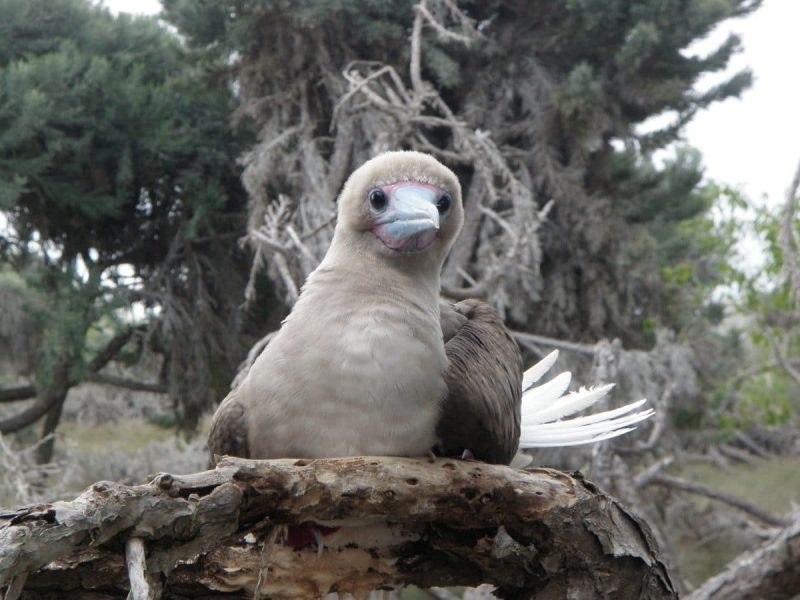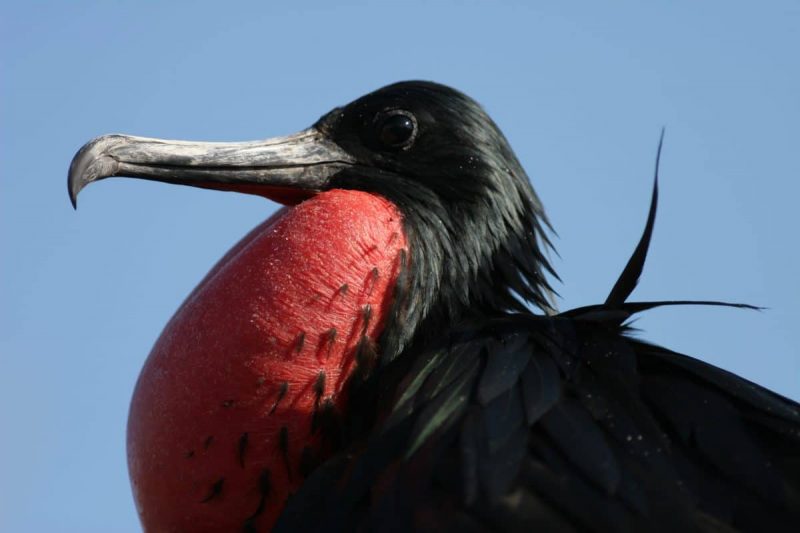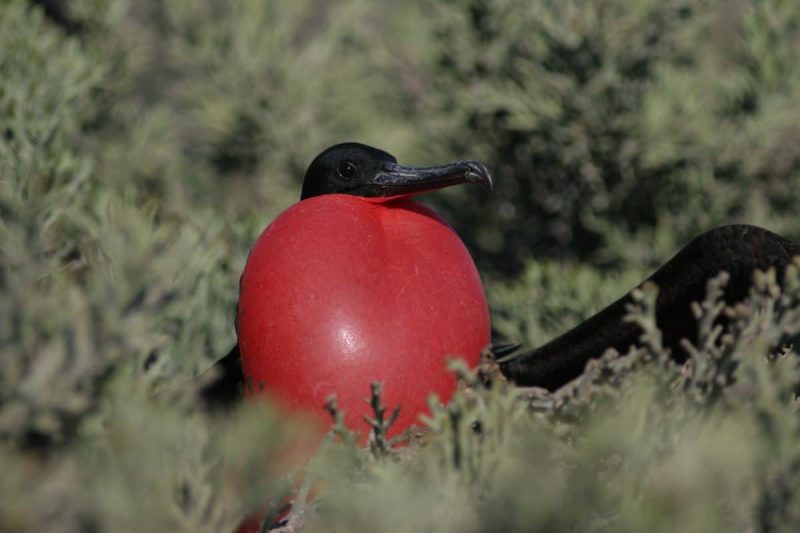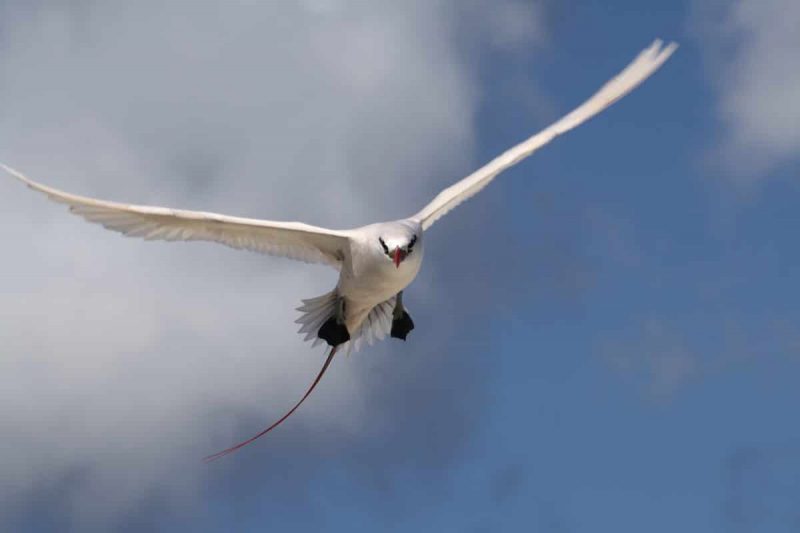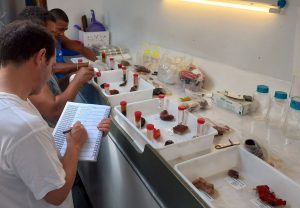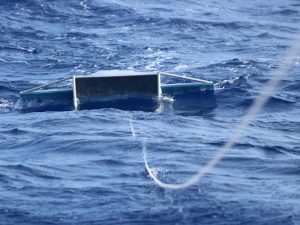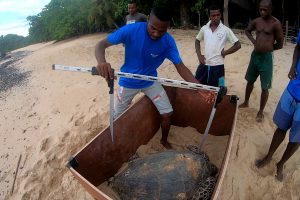At 14:00 on May 14, Antsiva sailed with 10 scientists on board for a new mission which, during three weeks of sailing, should take us from Nosy Be to Tulear with planned stops on each of the scattered islands, Juan de Nova, Bassas da India and Europa.
The first navigation to Juan de Nova is without incident. alternately sailing and engine. As we do not encounter a headwind, we are progressing fast enough and it is 24 hours ahead of schedule that we arrive in sight of the island.
After the administrative formalities with the gendarme, the three teams immediately start work.
The program of each team is done in good conditions, the weather is good.
The Kelonia team, composed of Stéphane and Georges, goes to catch juvenile turtles. Each turtle caught is then banded, measured, weighed. A genetic sampling is carried out as well as an identification photo of the profiles of the head and a photo of the carapace. This last information must show the link between the good health of the animal and the color of its shell. Captured turtles already banded are measured and weighed in order to follow the evolution of their growth.
The Ifremer team, composed of Ronan, Jérôme, Hendrik, Loïc and Delphine, aims to continue the genetic study on fish. After Glorious in 2009, the team must again collect 50 fish from 3 different species. This is to prove or not the existence of links between a Europa fish and the same fish caught at Glorieuses, Juan, or Reunion Island. Armed with harpoon rifles, our 5 hunters dive morning and evening in search of small fish. From the first dive, the team brings back 50 breaks: for this species, the quota is already reached, it must be said that the wreck of Juan on which they went to hunt, abounds.
The Spectrabenth team, composed of Jean Pascal, Pascal and Hugues, revisits the coral reefs to acquire additional data with the spectroimageur and especially to make Truths-Land that is to say to inform the information on the structure of the stands (corals algae, sponges). A large coral bleaching was found in Juan on the Pocillopores.
In addition to this activity, Jean-Pascal's mission was, with the support of the Genetics team, to collect groupers and parrotfish for an IFRECOR program on the contamination of ecosystems by pesticides. serve as a reference for islands such as Reunion or Martinique.
During one of the chase dives, Jerome is charged by a gray reef shark, he pushes it a first time with the tip of his harpoon rifle. But, the shark returns to the load pushing Jerome by the tip of his rifle to finally stop the fight and let Jerome join the annex. A little adrenaline, but fortunately no accident.
Turtle capture side, Stephane tries to train new catchers. Some people put so much goodwill that some bodily incidents are to be deplored. Stéphane, the master, gives the example and plunges head first on a coral potato. Then it is Delphine who opens the brow bone by rubbing too close to a carapace. Loïc does not want to be of rest and jumps in 10cm of water being hurt a sensitive part of the lower abdomen. Finally, Ronan grazes his arm. Next time, Kelonia may have to consider equipping its catchers with adequate body protections !!!
Finally after 4 days on Juan de Nova, the objectives of each team are reached.
We are ready to leave on May 22 in the morning.
The weather is calm, not a breath of air, the sea is beautiful and we sail to the engine. On board, the atmosphere is nap, reading comics or tarot parites. The second night the weather is deteriorating. On the horizon, very dense clouds are crossed by incessant and dazzling lightning that do not announce anything good. From the weather, we're going through a moderate depression, but it's still a bit of a shake-up.
We had left the zodiac behind and, around 3am, a strong explosion woke us up. A wreck came jamming in the mooring and, under the force of traction, in the black night and under the grains it immediately exploded. Goodbye zodiac ...
In the early morning, we discover between two violent grains the huge Bassas lagoon that is reflected in the leaden sky. It could be magical, but the sea, the strong wind and the conjunction of crossed waves make any wetting impossible. To make sure of this, we go along the western reef, passing near the wrecks we had planned to explore. But it's lost. The morale of the troops is as dark as the sky. On the deck, all of them watch with some bitterness the waves breaking on the reef. We must continue our journey, further south, towards Europa. In the near tight, torrents of water fall on us, the sea is strong and short and despite the length of the boat, we plant piles. After 12 hours on this regime, we arrive at night near the wetting of Europa, but the conditions do not allow to anchor safely and we shoot leeward shores of the island all night long until daybreak .
Finally May 25 at 7:00 am, Antsiva throws her anchor 16 meters deep in front of the weather station. The morning is devoted to administrative formalities with the policeman. In the afternoon, the weather improves and the various scientific projects resume.
Ifremer stays in the southern part to hunt small fish in water that begins to cool seriously. During this time, Kelonia and AAMP sink into the mangrove.
After the torrential rains that hit the whole area, the mangrove waters are tannin-laden and, at the ebb tide, they take on an amazing coca cola color. It is not easy in these conditions to spot and chase turtles and then, these troubled waters are better for small tip black sharks that crisscross the mangrove in all directions.
Every day, the different teams get to work.
The Kelonia team leaves early in the morning and returns only at dusk. Indeed, they must adjust their schedules on those of the tide because the passes to enter the mangrove are only passable at high tide. Once in the mangrove, the appendix is completely stranded at low tide and, after the turtles have been captured, the team has only to do a small restorative nap in the shade of the mangroves until the recovery of the waters.
Even though the clarity is improving every day, the bottom of the mangrove is still very turbid and the hawksbones that Kelonia is used to find in this area, do not seem, this time to be at the rendezvous. On the other hand, Stephane has discovered a new small arm of mangrove or group dozens of green turtles. Pascal, with his big arms, is wreaking havoc!
The Ifremer team continues its hunt for small fish, with more or less luck and success depending on the day.
But, after 5 days of intensive hunting, the 150 samples are harvested and stored in the freezer. Our five hunters will be able to put away their harpoon rifles and participate in the activities and work of the other two teams.
As for the Spectrabenth team, after a few spectro dives, it focuses on Truth-Land. And then, 8 years after installing a REEF CHECK station in Europa during the Quiksilver Crossing expedition in April 2002, the divers will also re-survey the external slope station, which will prove to be the most beautiful site in Europe. diving on the entire northern coast of Europa.
Saturday, May 29, after a magnificent dive on Reef Check in the company of two big groupers and a gigantic Napoleon, Antsiva goes to the invitation of the soldiers who organize a barbecue at the camp.
We bring a nice trevally and a barracuda, to vary the menus 'sausages-steaks' of the military. This meal allows us to get to know the gendarme and the young lieutenant. Will follow an afternoon of relaxation appreciated by all.
Sunday, May 30, a new depression from the south touches us. No more trace of blue in this uniformly gray sky, the showers succeed one another. Some scientists decide to brave the elements to make observations in the south of the island at low tide. The others wait for a thinning and work studiously on the computers.
Monday, May 31: This morning, a breath has awakened us, a second wind and we are on deck to watch the first whale of the season. The following days, we will see some again without being able to identify caudales. Pity.
Today, Georges, the dean of the team caught his first turtle. Even if, at age 71, Georges displays exceptional health, the feat remains real.
Wednesday, June 2, our water maker has broken down, the military will help us by bringing water cans. With the swell, the maneuver is not very easy, but, thanks to the combined efforts of all, we manage to deposit six 200-liter drums on the deck and then to pour them into our tank. We have almost full, which should be enough, being careful, to finish the mission.
In the afternoon, the gendarme the lieutenant and three soldiers come to visit the boat. The sergeant appreciates the boat, but less the swell and we see it green over the course of the visit.
During the last dinner on Europa, the Kélonia-Antsiva committee representing the Federation of Flying Turtle Captors of the Islands decided to award a diploma to all flying turtle seekers.
This degree will open many avenues in the scientific field and should be highly coveted by all companies having any connection with the marine environment. The holders of this diploma will have proved their determination for the purposes set and this sometimes at the risk of their lives, their readiness for action and their responsiveness to marine events.
List of ten winners:
Level 1- 1 turtle:
George Hughes, Delphine Muths, Ronan Le Goff, Anne Tisne
Level 2- between 1 and 10 turtles:
Jean Pascal Quod, Pascal Mouquet, Loic Ru, Hugues Evano
Expert level: more than 30 tortures: Hendrik Sauvignet, Jérome Bourgea
And tonight, champagne flows afloat ...
Friday, June 4th, the depression has passed. The three weeks of mission are coming to an end and it is time to think about returning to Tulear. Half a day handling is required to rinse and store all equipment.
The Kelonia Annex and the frozen samples remain on the island and will fly back with the military.
Finally, at noon, everything is set and we are ready to sail.
A few miles offshore, we drop the last little turtle picked on the beach and we hope to save from its many predators. All the other baby turtles that we released on Europa immediately ended up in the stomach of a frigate or a fish! Wish this one a longer life ...
The crossing to Tulear is quite fast and we must even slow down to arrive at the entrance of the lagoon at dawn. In the rising sun, we see dozens of sailboats. Vezo fishermen, bundled up in anoraks and hats go fishing. It must be said that on deck, the temperature is only 16 degrees
The time to gather all the equipment, to find a taxi and our ten scientists leave the edge. We will meet together at night for a pantagruelique dinner at the Italian.
This long mission is coming to an end. It allowed us to find the "hard core" of the Antsiva regulars whom we still appreciate as much and whom we always welcome with so much pleasure: Stéphane, Jean-Pascal, Jerome, Hendrik, Hugues and Pascal and she made us discover four "new recruits" Ronan, the "chef" esteemed and appreciated by all, Loïc who loves forming teams around a glass of rum, Delphine who wanted to launch the fashion of the scarred and finally George who, from the top of his 71 years can give sacred lessons to all these youngsters!
One regret of course, the missed appointment with Bassas da India. Bassas is not an easy girl, she just proved it to us once again.
But we did not say our last word ...
Finally, a big thank you to the team for these three weeks of life on board where everyone has shared his good humor and enthusiasm.
And congratulations to all photographers for the harvest of beautiful images, with this year a special mention for underwater photos.
